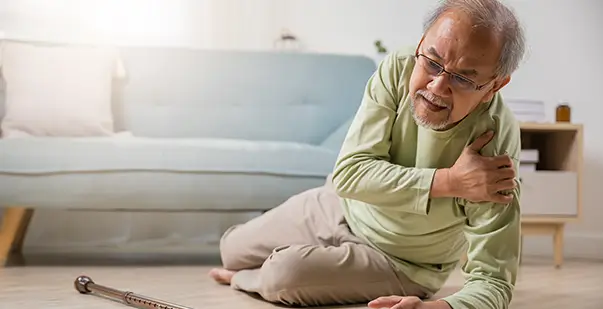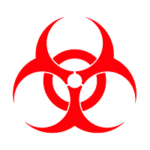Strokes, often termed as “brain attacks,” occur when blood flow to the brain is interrupted, leading to a range of health complications. These sudden events can cause lasting damage, impacting a person’s ability to move, speak, and even think clearly.
Did you know that, according to the World Health Organization, 15 million people worldwide suffer a stroke each year, with 5 million dying and 5 million remaining permanently disabled? Yes, that is true and quite unfortunate also.
While medical advancements have improved stroke treatment, it’s crucial to recognize the signs of impending death that may follow a stroke. Identifying these signs can help patients, caregivers, and healthcare professionals better prepare for end-of-life care and ensure comfort and dignity for those affected.
In this guide, we’ll explore the signs of impending death after stroke and how it can positively influence the care journey of stroke patients.
Get started on your path to success with our expert-led courses.
- 100% Online Certification
- Instant Certification card
- Fast & Convenient
- Nationally Accepted
What is a Stroke?
A stroke is a sudden interruption of blood flow to the brain, often referred to as a ‘brain attack’. It can occur when a blood vessel in the brain becomes blocked or bursts, causing a lack of oxygen and nutrients to the brain cells, which can start to die within minutes. There are two main types: ischemic, and hemorrhagic.
- Ischemic stroke: This occurs when the blood supply to part of the brain is blocked or reduced, preventing brain tissue from getting oxygen and nutrients. Brain cells begin to die within minutes.
- Hemorrhagic stroke: This occurs when a blood vessel in the brain leaks or bursts, causing bleeding in the brain. The blood increases pressure on brain cells and damages them.
The effects of a stroke can vary depending on the severity and location of the brain damage, but they commonly include difficulties with movement, speech, vision, and cognition. Let’s get into the details of some of these common symptoms.
Your brain is like a control center, with different parts responsible for different functions. When a stroke occurs, which part of the brain is affected determines the symptoms you may experience. For instance, if the stroke affects Broca’s area, which manages facial and mouth muscle movements for speaking, you might find it hard to speak clearly or slur your words.
The symptoms of a stroke vary depending on which area of the brain is impacted. They can include:
- Difficulty speaking or understanding others: The person might seem confused, have trouble speaking clearly, or not understand what others are saying.
- Numbness, weakness, or paralysis on one side: This could affect the face, arm, or leg on just one side of the body. They can try raising both arms—if one falls, it could indicate a stroke. Also, one side of the mouth may droop when they try to smile.
- Vision problems: Suddenly blurred or double vision, or blackened vision in one or both eyes, could be a sign of a stroke.
- Sudden, severe headache: Vomiting, dizziness, or changes in consciousness may accompany the headache.
- Trouble walking: If someone is having a stroke, they might stumble, lose balance, or have trouble coordinating their movements.
It’s important to note that if a person who has had a stroke is not breathing, performing Cardiopulmonary Resuscitation (CPR) until the emergency services arrive may save their life.
Therefore, being trained in CPR can be crucial in situations where a person is experiencing a stroke. It equips individuals with the knowledge, skills, and confidence needed to respond effectively during such emergencies
Signs of Impending Death After a Stroke
Determining whether someone with a severe stroke will pass away can be difficult. Seeking medical assistance promptly can boost the chances of survival, yet certain types of strokes, particularly those affecting vital functions like breathing and circulation, carry a higher risk of fatality.
In severe instances, patients may lapse into a coma, showing abnormal neurological signs such as unresponsiveness to pain, lack of verbal reaction, and absence of brain stem activity. Hospice care becomes an option with a grim prognosis.
Death after a stroke can be immediate or occur weeks or months later. Signs of impending death might include the following:
1. Changes in Consciousness
After a stroke, some people might become very sleepy or seem like they’re not fully awake. This means they may have a hard time staying alert or understanding what’s happening around them.
It’s like they’re drifting off to sleep more often. This change happens because the brain, which controls everything we do, gets affected by the stroke.
When someone’s consciousness changes like this, it can be a sign that their body is getting ready for the end of life.
2. Difficulty Breathing
Changes in breathing patterns can signal that the body is nearing the end of life after a stroke. As a person approaches death, their breathing may become irregular, shallow, or labored.
They may also make sounds while breathing, such as gasping or rattling.
These changes occur because the body’s systems are shutting down, including the respiratory system, which becomes less effective at supplying oxygen to the body.
3. Decreased Urine Output
As a person nears the end of life after a stroke, their body may not make as much urine as before. This happens because the kidneys, which help remove waste from the body through urine, may not work as well.
When urine output decreases, it means the body might not be able to get rid of waste properly. This can lead to a buildup of toxins in the body, making the person feel unwell.
Also, a stroke can cause bladder dysfunction by damaging the nerves that control the bladder. For example, patients with hemorrhagic stroke are more likely to have storage disorders, while patients with ischemic stroke are more likely to have emptying disorders.
4. Changes in Vital Signs
Vital signs like blood pressure, heart rate, and body temperature might change as a person gets closer to the end of life after a stroke. This means these signs may not stay steady and could go up or down unexpectedly.
For example, blood pressure might drop, or the heart rate might slow down. These changes happen because the body’s systems are weakening.
5. Changes in Skin Color and Temperature
As a person nears the end of life after a stroke, their skin might look different. It could become pale or take on a bluish tint. The skin might also feel cooler than usual. These changes happen because the body’s blood flow decreases, and oxygen levels drop.
When there’s not enough oxygen in the blood, the skin can’t get the nourishment it needs, causing these changes.
It’s a sign that the body’s circulation is slowing down, which is a natural part of the body’s process as it prepares for the end of life.
6. Increased Fatigue and Weakness
As someone nears the end of life after a stroke, they might feel extremely tired and weak. This means they have very little energy and find it hard to do even simple things, like talking or moving around. It’s like feeling very sleepy and not having the strength to do much.
This happens because their body is getting weaker, and they may need a lot of rest. Family and caregivers can help by making sure they’re comfortable and not asking them to do too much.
7. Decreased Appetite and Thirst
When someone is nearing the end of their life after experiencing a stroke, they may not feel hungry or thirsty like they used to. This happens because their body doesn’t need as much energy as before, so they don’t feel the same desire to eat or drink.
It’s like when you’re not very hungry after eating a big meal. For the person who had a stroke, their body is working differently now, and they may not have the energy to eat or drink as they did before.
8. Increased Confusion or Agitation
Confusion is a common side effect of a stroke, which can damage areas of the brain that control memory, problem-solving, concentration, and communication. This can lead to confusion and difficulties in everyday life.
This means they might not understand things as they used to or may become restless and upset without clear reasons. This confusion and agitation can be distressing for both the person and their loved ones.
It may happen because the stroke affects how the brain works, making it hard for them to think clearly or stay calm. Sometimes, they might seem worried or scared, even if there’s no obvious cause.
9. Swelling and Fluid Retention
Cerebral edema, or brain swelling, is a serious complication of a stroke that can lead to increased intracranial pressure, neurological symptoms, and cerebral hernia. It’s the body’s response to brain cells being damaged or killed by a lack of oxygen and blood supply.
Swelling can occur in specific locations or throughout the brain, and can cause mass-effects with distortion, tissue shift, and increased intracranial pressure (ICP). This pressure can prevent blood from flowing to your brain, which deprives it of the oxygen it needs to function.
Swelling can also block other fluids from leaving your brain, making the swelling even worse. Early deterioration and death is often the result of edema in the infarcted tissue.
10. Decreased Mobility
Mobility can decrease as a person nears the end of life after experiencing a stroke. This means that they may have trouble moving around or changing positions on their own.
After a stroke, muscles can become weak, making it hard for the person to coordinate their movements. They might need help from caregivers to get in and out of bed, or they might spend more time lying down or sitting because moving around feels too difficult.
Decreased mobility can also increase the risk of developing bedsores, which are painful skin wounds that occur when someone stays in one position for too long.
11. Loss of Bowel Control
Loss of bowel control refers to the inability to control bowel movements. It happens when the muscles and nerves that regulate bowel movements stop functioning properly. This can occur in situations such as advanced illness or neurological conditions like strokes.
When bowel control is lost, a person may experience involuntary passing of stool (feces) without warning. It can be distressing and may require assistance with personal hygiene and care.
This symptom often indicates a significant decline in health and may be one of several signs that medical professionals monitor in patients who are seriously ill or nearing the end of life.
Symptom Management
Managing stroke symptoms involves immediate medical attention. If you suspect a stroke, use the FAST method:
- Face (check if one side droops when smiling)
- Arms (see if one arm drifts down when raised)
- Speech (listen for slurred or unusual speech)
- Time (call emergency services immediately if these signs are observed).
Stroke treatments are most effective early after symptoms occur. Recovery often involves therapies like speech and physical therapy.
Receive your CPR Certification
Get your CPR certificate in less than 15 minutes*
Role of CPR in Case of a Stroke
Cardiopulmonary resuscitation (CPR) can help keep blood circulating and deliver oxygen to the body during a stroke until specialist treatment is available. CPR may be appropriate for patients with minor and brain stem strokes with no significant comorbidities. However, CPR and mechanical ventilation should not be recommended as a treatment option in patients with severe stroke unless requested.
CPR consists of three steps: Chest compressions, Airway, and Breathing.
- Chest Compressions: This involves applying pressure to the chest to help pump blood to the body, mimicking the heart’s function.
- Airway: This step involves checking the person’s airway to make sure it’s clear for breathing.
- Breathing: In this step, rescue breaths are given to the person to provide oxygen.
For lay rescuers, compression-only CPR (COCPR) is recommended. The compression depth for adults should be at least 2 inches, and the compression rate should be at least 100-120/min.
If you find someone unconscious and pulseless, you should perform CPR immediately.
It’s important to note that these steps should be performed by someone trained in CPR. If you’re not trained in CPR and an emergency arises, it’s recommended to perform hands-only CPR, which involves chest compressions only.
If you don’t know or are uncertain, you can ask the 911 dispatcher to walk you through how to perform CPR.
CPR can improve the chance of survival and minimize the chance of permanent disability.
Acting Fast for Stroke Recovery and CPR Training
Knowing about strokes and recognizing the warning signs is important for acting fast and improving outcomes. While CPR might not be needed for stroke patients, getting CPR training from the American HealthCare Academy can be lifesaving in other emergencies. Identifying signs, getting prompt medical assistance, and giving supportive care can greatly improve the chances of recovery for stroke patients. Remember, acting quickly and with kindness can make our society more caring and supportive.







